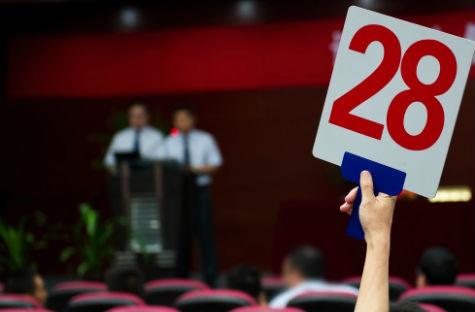Australian Commercial Galleries Association (ACGA) President Anna Pappas has hit out at the scheme, saying it is hurting small and medium galleries.
The current Resale Royalty Scheme, which is under review, was enacted in 2010 by the Labor government, with the then Arts Minister Peter Garrett saying it would provide equality for visual artists who missed out on living off the royalties from their work, as other successful artists, such as songwriters, were able to.
It has paid more than $1.5 million in royalties to 650 artists through 6,800 resales. Over 90% of these payments have gone to living artists, and more than 60% to Indigenous artists.
But ACGA’s President Anna Pappas says it is hurting small and medium galleries.
‘He [Garrett] seemed to overlook the fact that a visual artist’s work is a unique object and has no relation to reproduction such as posters, post cards and so on which are already covered by copyright, or to books and lyrics who receive income from sales of copies,’ Pappas told ArtsHub.
‘Unfortunately, there are many problematic areas with the scheme,’ says Pappas. ‘The base amount of $1,000 is far too low for a complicated administrative process and the 5% Resale Royalty tax is an uncapped flat rate, allowing it to benefit the artists on the high end of the scale while doing nothing for the artists that are struggling.’
She says that before the scheme was introduced art dealers and gallery owners and operators would buy works from artists to help them with their careers or sometimes just to give them some financial assistance.
‘Now, when purchased direct from the source, brand new art is considered a resale by definition – and many galleries have ceased to do so.’
Other concerns include the fact that the 5% resale royalty is applied to the after GST sale price, so there is a tax applied to the tax. If galleries breach the rules, severe fines apply.
Pappas instead of risking breaching what can often be a complicated and easy to misunderstand administrative procedure, some galleries have steer clear of anything that may fall into the re-sale category. This has a negative consequence for the business as well as the artist.
‘Art dealing and gallery practice is generally a lean business. A number of serious, well-regarded galleries have closed, but the Government has not taken any notice as they are considered small businesses. Additional administration work or clerical work for funding additional government returns, on top of red tape makes this royalty tax a very unpopular proposition in an adverse economic climate,’ says Pappas.
One gallery, who has not been named, were told by their auditor that they had racked up $10,000 in RRS liability due to the method they had used to make consignment sales, even though they honestly believed that what they were doing was a primary sale.
In fact, many galleries have reacted badly to the scheme.
‘As the President of ACGA I speak on behalf of private galleries, and the majority have stopped dealing in the secondary market. Our industry has been hit by the Self Managed Superannuation Fund (SMSF) changes, the GFC and the RRS has created a domino effect on the livelihood of many galleries and their artists,’ Pappas told ArtsHub. When asked if she knew of anyone who had benefitted positively from the scheme she replied, ‘Not from our industry.’
Submissions to the review closed on 12 July with the Minister for the Arts Tony Burke saying that it will ‘evaluate whether the legislation and its associated scheme are meeting the original objectives of providing artists with proper recognition for their art, and an additional source of income’.
Shadow Minister for the Arts George Brandis has also said that he has long been sceptical of the scheme, telling the ABC that, ‘Even years after it was introduced, has still failed to provide economic benefits to artists as much as it has cost the Commonwealth.’
While there are concerns, Pappas does highlight the good things that have come from the scheme.
‘The majority of the industry did not object to the ideology and the fact that 68% of royalties have been paid to indigenous artists should surely be a positive outcome for them and for their artistic communities. That the Art Market in Australia has now a comprehensive database of artists and art professionals, is also a very positive outcome. It is the administration and complication that needs simplifying together with an increase in the hurdle to something pragmatic like $10,000 that is killing the system,’ says Pappas.





